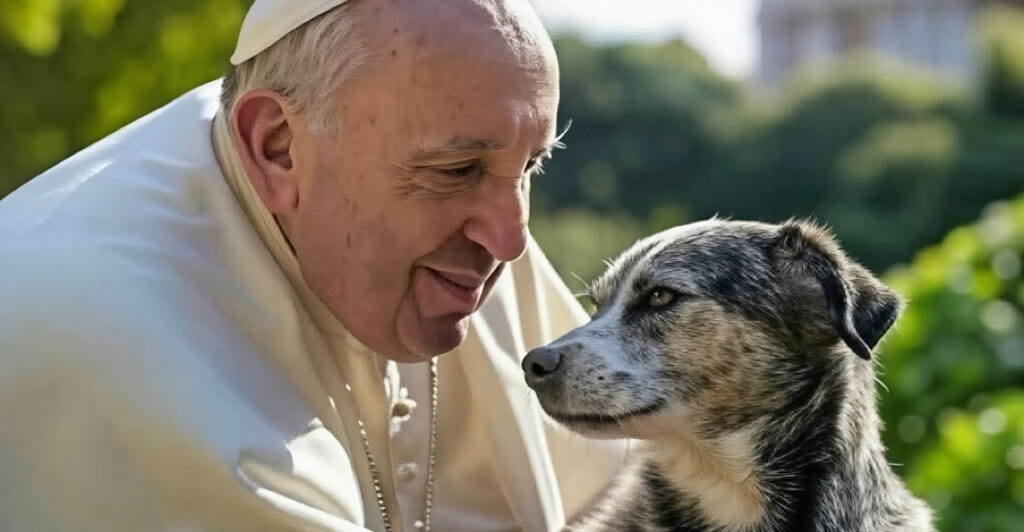
Pope Francis, who passed away on April 21, 2025, at the age of 88, left behind more than theological reforms—he left a legacy of compassion that included an extraordinary rapport with animals.
Taking his name from St. Francis of Assisi, the patron saint of animals, Francis embraced a vision of faith grounded in respect for all life. His 2015 encyclical Laudato Si’ underscored this belief, stating: “not one of them is forgotten before God.” These convictions weren’t just spiritual ideas—they translated into real-life moments where Francis engaged directly with animals in ways that captivated the world.
From wild tigers to stray dogs, his actions consistently illustrated his belief in a shared responsibility to protect our “common home.” These intimate, often unexpected encounters became hallmarks of his papacy and living proof of his deep moral connection to creation.
1. The Stray Dog That Stopped the Vatican
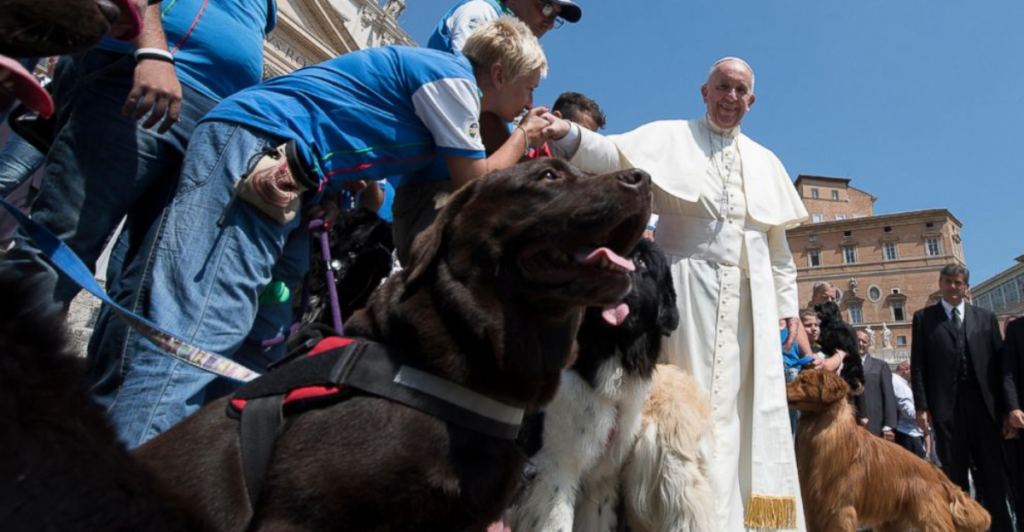
In the middle of a typical papal address in St. Peter’s Square, a scruffy stray dog unexpectedly wandered into the spotlight. What could have been a disruption quickly turned into a heartwarming moment of connection.
Pope Francis paused to acknowledge the dog’s presence, shifting the tone of the gathering from solemn to celebratory. Instead of dismissing the incident, he embraced it—an unplanned reminder of life’s spontaneity and the importance of compassion in every encounter.
The crowd responded with laughter and applause, touched by the Pope’s openness and humility. The event quickly made headlines and went viral, demonstrating the unexpected ways animals can highlight human values and bring levity, reflection, and warmth to even the most formal of occasions.
2. When Elephants Returned to the Vatican—Sort Of
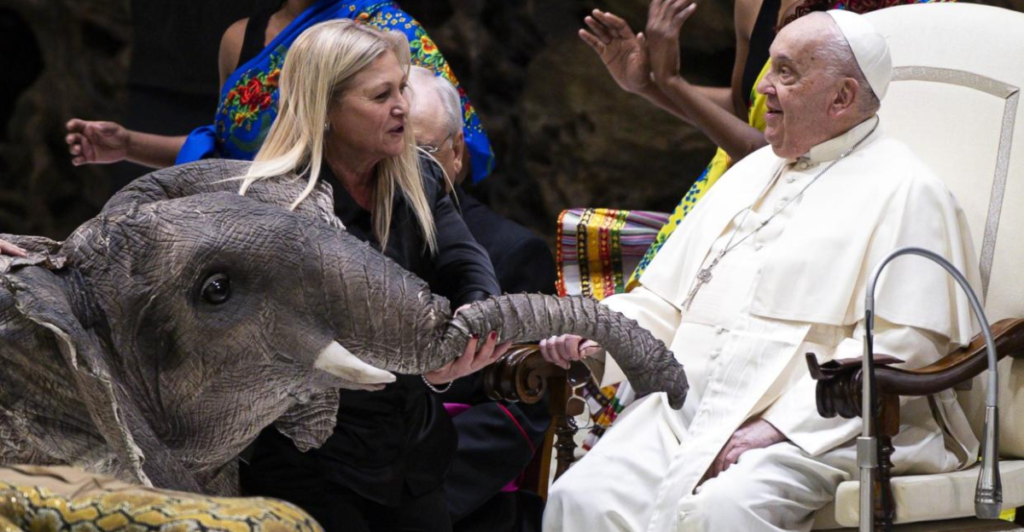
In January 2025, just months before his passing, Pope Francis presided over a Vatican audience that included two striking guests—animatronic elephants. The spectacle, part of a circus performance at Paul VI Hall, captivated both the Pope and attendees.
Though mechanical, the elephants stirred historical memories: in the early 1500s, Pope Leo X famously kept a real albino elephant named Annone in the Vatican Gardens. The elephants’ appearance was a tribute to this long-forgotten tradition. Watching Francis beam with delight, it was clear his awe for creation never waned, even in his final months.
The moment linked past and present in a playful, poignant way—reminding the world that wonder isn’t reserved for childhood. Through these lifelike creatures, the Pope showed again that reverence for animals—whether real or symbolic—has a lasting place in spiritual life.
3. Petting a Tiger—The Pope’s Unlikely Encounter With a Big Cat
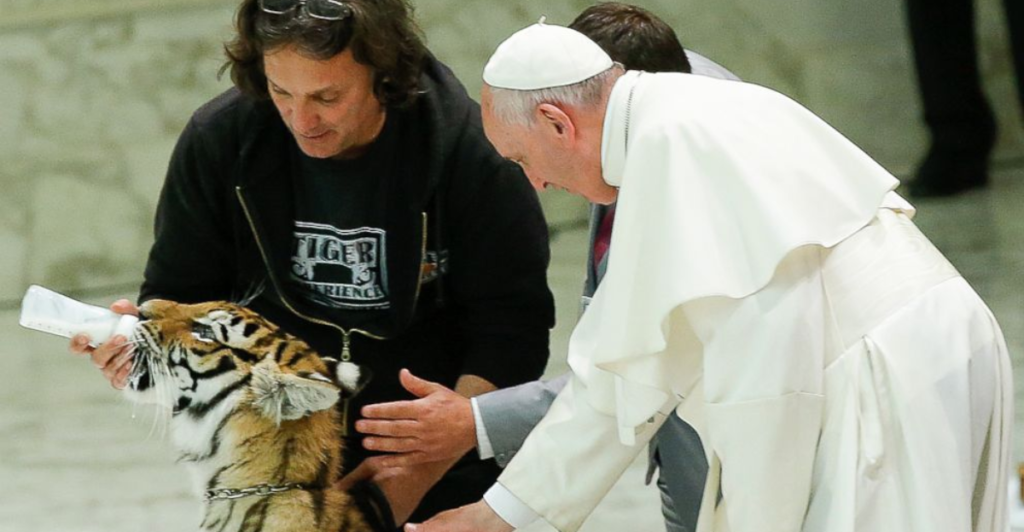
In one of the Vatican’s most unexpected moments, Pope Francis gently caressed a six-month-old tiger cub during the Jubilee for Circus and Traveling Show People in 2016. Held inside Paul VI Hall, the event blended spectacle with pastoral care, honoring performers often on society’s margins.
At first, both the tiger and the Pope appeared hesitant. A trainer diverted the cub’s attention with a bottle, allowing Francis to stroke its fur with a smile. He later joked about the surreal encounter, highlighting both his good humor and willingness to engage with creatures great and small.
The moment was lighthearted, but it also underscored a deeper theme of Francis’s papacy: embracing all of creation—even when it’s wrapped in stripes and teeth.
4. Birds, Magic, and Mercy—A Circus Celebration Like No Other
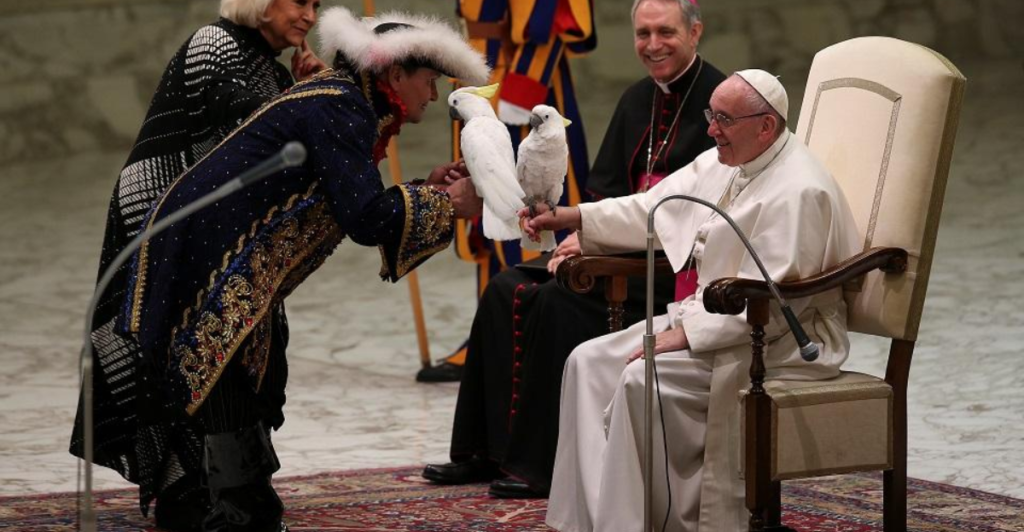
That same day in June 2016, the Pope’s audience for circus performers included a live bird of prey and an impromptu magic show. Organizers presented Pope Francis with a white magician’s top hat, blending pageantry with unexpected symbolism.
While the acrobatic feats and exotic animals dazzled, the event’s true message was mercy. This celebration was part of the Vatican’s broader Jubilee of Mercy, aiming to recognize the dignity of people in itinerant and often overlooked professions.
By welcoming circus artists—and their animal companions—into the sacred space of the Vatican, Francis sent a clear message: no one is too eccentric, too nomadic, or too unconventional to deserve the Church’s attention, respect, and compassion.
5. A Shepherd’s Symbol—Pope Francis and the Lamb
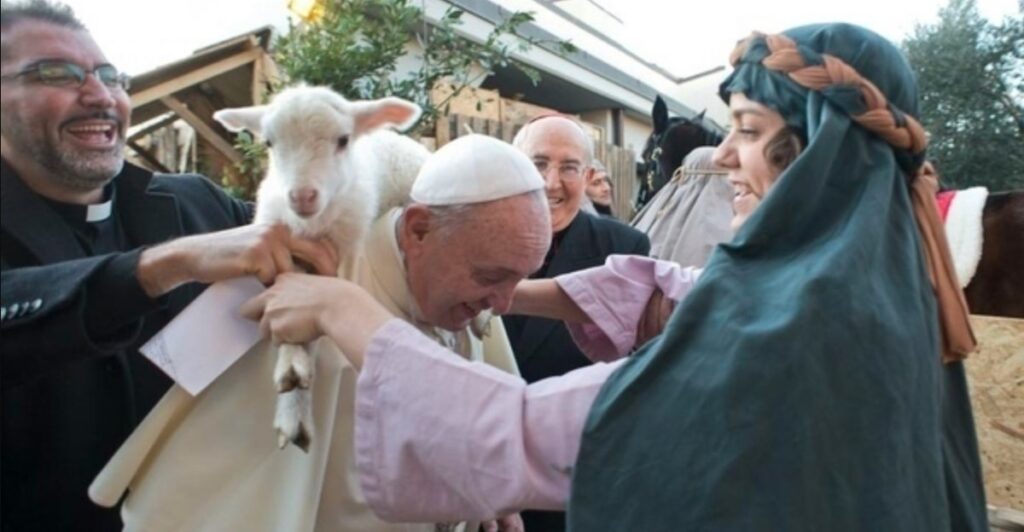
In a moment rich with symbolism, a woman dressed as a nativity character placed a lamb around Pope Francis’s shoulders during a visit to a Roman church on January 6, 2014. The Pope smiled, embracing the gesture with calm and grace.
The image quickly went viral, evoking Christ the Good Shepherd and reinforcing Francis’s pastoral identity. Rather than brushing off the unexpected act, he allowed the moment to speak—quietly and powerfully. For many, it captured the essence of his papacy: approachable, humble, and deeply rooted in Gospel imagery.
Whether with tigers, birds, or lambs, Pope Francis often finds himself at the center of unforgettable animal encounters—and each one adds a layer to his story of compassion and connection.
Pets or Parenthood? The Pope’s Provocative Comment

Pope Francis caused a global stir when he criticized a growing trend: couples choosing pets over children. Referring to it as “programmed love,” he warned that prioritizing animals in this way could foster emotional isolation and detract from meaningful human relationships.
The comment caught many off guard, especially given his link to St. Francis of Assisi. Yet, his statement wasn’t anti-animal—it was a call to reconsider balance. Pope Francis has consistently emphasized that while animals deserve care and respect, they should not replace the human vocation of parenthood and deep interpersonal connection.
His remarks sparked both criticism and support, prompting widespread reflection on modern family dynamics, pet culture, and the deeper social consequences of shifting priorities in human relationships.
Did the Pope Say Animals Go to Heaven?

A single sentence from Pope Francis—“Paradise is open to all God’s creatures”—sent shockwaves through the Catholic world. Delivered to comfort a grieving child, the remark seemed to imply that animals might share in the afterlife.
Media outlets quickly ran with the story, but the Vatican later clarified that the Pope’s words were misinterpreted. Catholic doctrine traditionally holds that only humans possess immortal souls. Still, the moment touched a nerve, sparking widespread conversation about the spiritual status of animals and the evolving views on life after death.
While not a formal theological shift, the episode illustrates how a simple expression of comfort can prompt serious dialogue on doctrine, compassion, and what eternal life might mean for the wider web of creation.
A Bold Document That Reframes Animal Ethics
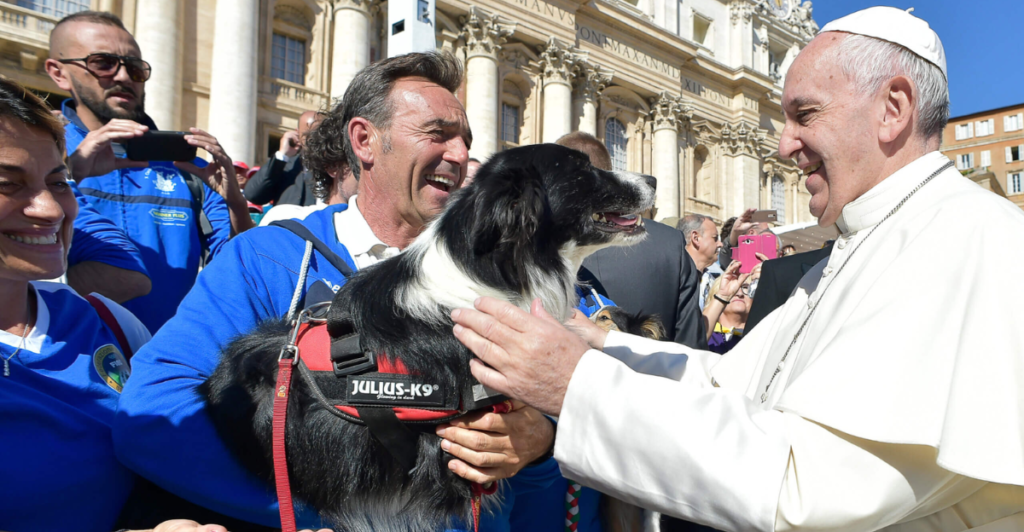
Pope Francis didn’t merely engage with animals—he redefined their place in Catholic thought. In his 2015 encyclical Laudato Si’, he made a bold claim: cruelty toward animals reflects a deeper moral failing, writing, “the same wretchedness which leads us to mistreat an animal will not be long in showing itself in our relationships with other people.”
He didn’t shy away from concrete stances either, opposing factory farming, animal testing, and practices that threaten biodiversity. His message was radical: animal welfare is not a fringe issue, but central to Christian ethics.
By insisting that concern for animals is part of a holistic moral worldview, Francis elevated the issue in ways no pope before him had. His teachings now form a lasting foundation for future advocacy, rooting compassion for all creatures not in sentiment, but in spiritual necessity.
Embracing St. Francis—But With a Different Lens
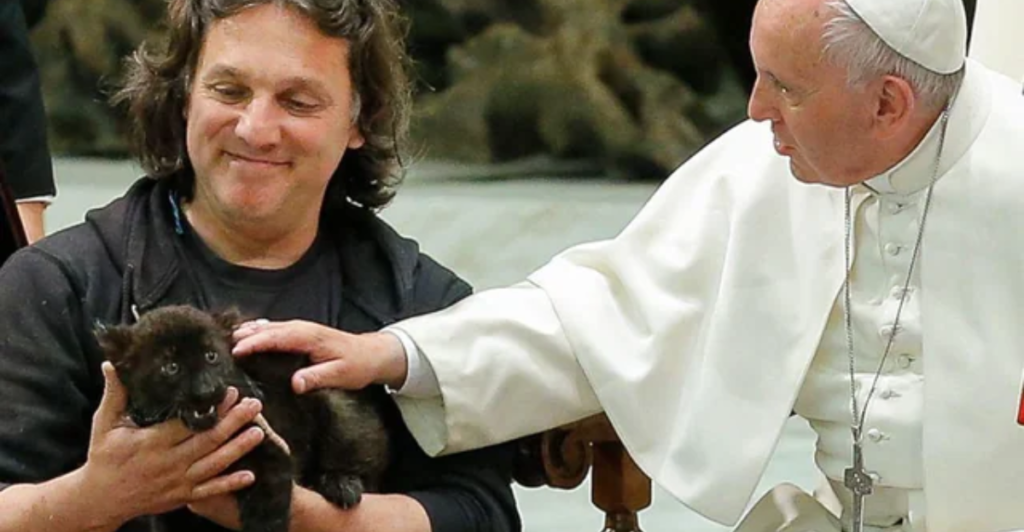
Despite his name and admiration for St. Francis of Assisi, Pope Francis approaches animal issues with greater caution than many expect. St. Francis famously preached to birds and tamed wild animals, yet he never treated them as pets.
He saw animals as sacred reflections of God’s design—not companions for ownership. In that spirit, Pope Francis discourages the growing trend of sentimentalizing animals. He emphasizes respect over possession, calling for a relationship that honors their autonomy and purpose.
This more measured stance challenges contemporary attitudes toward pets, while remaining deeply rooted in theological tradition. The Pope’s approach may surprise modern audiences, but it remains consistent with a vision of creation as something to be respected—not domesticated or exploited.
Cruelty to Animals? A Red Flag for Humanity

Pope Francis has made it clear: how we treat animals says a lot about who we are. In Laudato Si’, he draws a strong link between cruelty to animals and broader societal decay, noting that violence toward creatures often mirrors violence among people.
This isn’t just philosophical—it’s backed by studies showing connections between animal abuse and human aggression. Francis argues that protecting animals isn’t only about ethics; it’s about preserving human dignity. This approach reframes animal welfare as a moral and societal imperative.
The Pope’s message is simple but urgent: compassion for the vulnerable—whether human or animal—is not optional. It’s a fundamental reflection of the kind of world we choose to build, uphold, and believe in.
Rethinking Compassion Through a Papal Lens
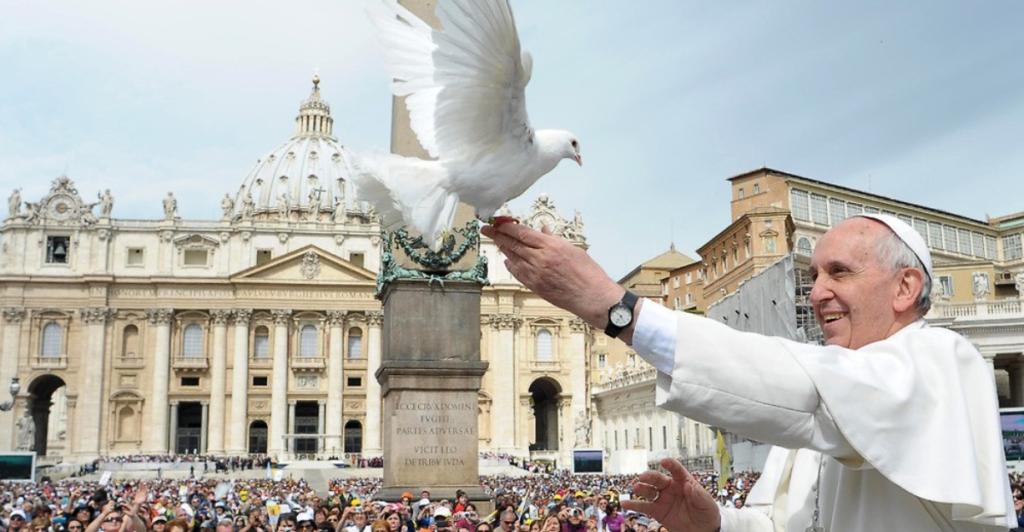
Pope Francis’s many interactions with animals go far beyond charming anecdotes—they reflect a deliberate, often provocative rethinking of how humanity relates to the rest of creation. He challenges believers to shift from ownership to stewardship, from sentimentality to responsibility.
These encounters, both personal and theological, blend age-old tradition with bold, modern perspectives. Whether reflecting on the meaning of a stray dog’s visit or redefining ecological ethics through Laudato Si’, Francis calls for a more profound and courageous compassion.
In an era of climate anxiety, shifting values, and growing concern for animal rights, his voice offers not easy answers, but a moral framework for navigating a world where humans and animals coexist, depend on one another, and share a common home.
Explore more of our trending stories and hit Follow to keep them coming to your feed!

Don’t miss out on more stories like this! Hit the Follow button at the top of this article to stay updated with the latest news. Share your thoughts in the comments—we’d love to hear from you!







